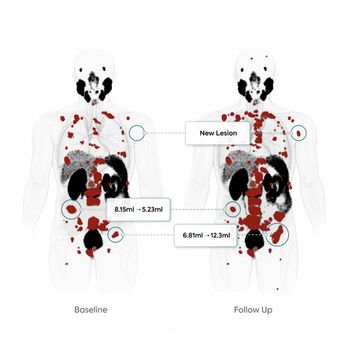Emerging research continues to suggest overutilization of head and neck computed tomography angiography (HNCTA) in emergency department (ED) settings.
For the retrospective study, recently published in Internal and Emergency Medicine, researchers reviewed HNCTA ordering and positivity rates for patients who presented with headache (HA) and/or dizziness (DZ) to the emergency department of an academic medical center over a five-year period. A total of 2,264 patients (out of 24,892 patients presenting with HA and/or DZ) underwent HNCTA, according to the study.
The researchers found that 662 patients out of 5001 patients (13.24 percent) with HA and/or DZ presentations received HNCTA exams in 2021 in comparison to 422 out of 5,351 patients (7.89 percent) in 2017. In addition to the 67.4 percent increase in CTA exams in this population, the study authors noted a 38.1 percent decrease in acute pathological findings with CTA exams between 2017 (71 of 422 patients, 16.8 percent) and 2021 (69 of 662 patients, 10.4 percent).
“Our study thus contributes to the notion that CT ordering rates in the ED are increasing while adding that this increase may be unnecessary, as (evidenced) in the decreasing percentage of scans ordered that yielded a discovery of pathology associated with the indication for the scan,” wrote study co-author Marc D. Succi, M.D., a board-certified emergency radiologist and associate chair of innovation and commercialization at Massachusetts General Hospital in Boston, and colleagues.
Study findings also revealed that patients with private insurance were 44 percent more likely to receive HNCTA exams than patients with Medicare. The study authors also found that Black patients were 31 percent less likely to have a HNCTA exam than White patients.
“While multiple explanations exist to explain these results, it is possible that systemic and implicit biases influence HNCTA ordering rates in the ED,” posited Succi and colleagues.
Three Key Takeaways
- Increase in HNCTA utilization. The study highlights a notable increase in the utilization of Head and Neck Computed Tomography Angiography (HNCTA) in emergency department (ED) settings, with a 67.4 percent rise in exams conducted over a five-year period. This trend suggests a potential overutilization of HNCTA scans for patients presenting with headache (HA) and/or dizziness (DZ) symptoms.
- Decrease in positive findings. Despite the rise in HNCTA utilization, there has been a significant decrease (38.1 percent) in the discovery of acute pathological findings associated with these scans. This decrease in positive findings indicates that a considerable portion of HNCTA exams may be unnecessary, adding weight to the argument of overutilization.
- Disparities in exam distribution. The study also reveals disparities in the distribution of HNCTA exams, with patients having private insurance being 44 percent more likely to receive these exams compared to those with Medicare. Additionally, Black patients were found to be 31 percent less likely to undergo HNCTA exams than White patients, suggesting potential systemic and implicit biases influencing ordering rates in the ED. Addressing these disparities and biases is crucial for ensuring equitable healthcare delivery.
The study authors emphasized the lack of an established standard with respect to the positivity rate of HNCTA exams performed in emergency departments and that clinical judgment calls often come into play. They added that facility-specific practices, medicolegal considerations and time constraints are other factors that may impact ordering of HNCTA exams.
“Considering evidence presented herein, re-evaluation of existing frameworks governing HNCTA acquisition is needed,” added Succi and colleagues.
(Editor’s note: For related content, see “Study Shows Significant Overutilization of Head and Neck CT Angiography in the ER,” “Head CT for Acute Stroke Patients: Study Shows 22 Percent Improvement for 30-Minute Turnaround Times” and “Study Says MRI Offers Most Cost-Effective Imaging for Dizziness Presentations in the ER.”)
Beyond the inherent limitations of a single-center retrospective study, the authors conceded possible bias with respect to patient and outcome selection. They also acknowledged that the COVID-19 pandemic, which occurred during the course of the study, may have affected ordering practices for imaging in the emergency department.




























